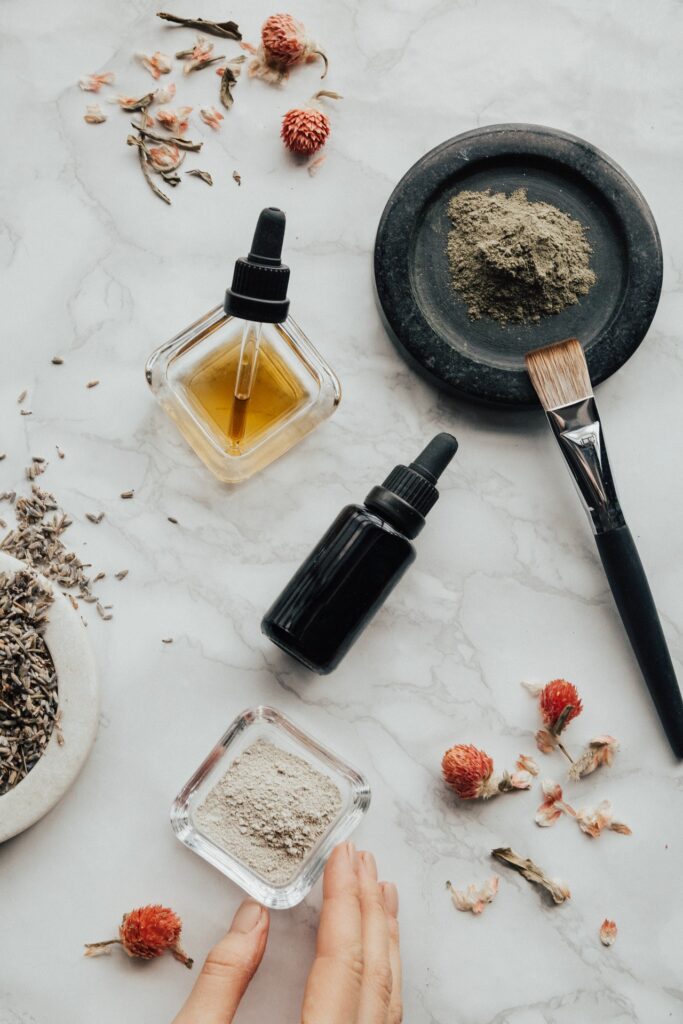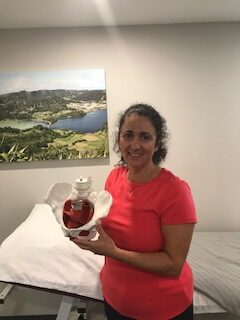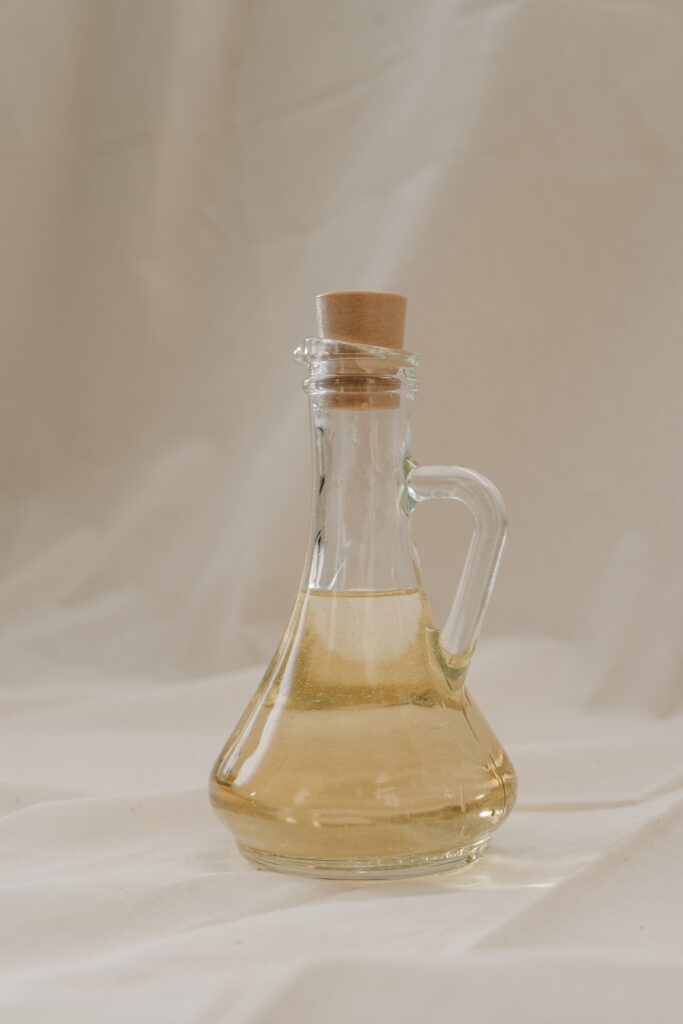
#1. Pelvic Floor Physiotherapy
Physiotherapy treatments, such as pelvic floor rehabilitation and exercises, have been proven to treat a variety of conditions that cause pelvic pain. Some of the most common pelvic conditions that physiotherapy treats include:
- Pregnancy related or Postpartum pelvic pain. Pelvic floor physiotherapy can be helpful to strengthen or lengthen muscles or tissues especially for new moms who have had a c-section, episiotomy or a vaginal tear to the perineum. Sometimes pelvic girdle pain such as pubic symphysis dysfunction or sacroiliac joint pain can happen during pregnancy. There are many things pelvic physiotherapists can help with.
- Pain following a hysterectomy or abdominal surgery. Pelvic physiotherapists can help provide exercises and hands on treatment to the connective tissues surrounding the scar and abdominal tissues. The focus is to decrease tension and regain muscle strength into the abdomen.
- Endometriosis. A painful disorder in which tissue similar to the tissue that normally lines the inside of your uterus — the endometrium — grows outside your uterus. Endometriosis most commonly involves your ovaries, fallopian tubes and the tissue lining your pelvis. Focusing on the muscles, ligaments and bones that support the uterus can be very beneficial in decreasing pain.
- Dyspareunia. Painful intercourse can affect many women. There are many reasons for this and a pelvic physiotherapist can break down where the root of the issue may be taking a whole person approach to your care.
- Urinary incontinence. A physiotherapist can help determine the cause of your leakage, rather than simply treating the symptoms. Treatment for this all too common problem, but treatable condition, will focus on strengthening the muscles that support your bladder in order to eliminate incontinence issues.
- Constipation. Pelvic floor rehabilitation can loosen and relax the muscles in your pelvic and anal areas, which can help relieve and eliminate constipation. See the following article for more tips on constipation.

While these are just a few of the most common conditions of pelvic dysfunction that can be treated with physiotherapy, there are a number of additional pelvic conditions that physiotherapy treatments can relieve. For example, pelvic organ prolapse and infertility problems may also be improved with pelvic therapy. Some less common conditions that can be treated also include interstitial cystitis, menopause symptoms and diastasis recti.
At Durham Pelvic Health Physiotherapy we treat all these conditions and many more and we treat men, women and children. In many cases, our treatment methods can help provide relief and recovery for problems that patients have been facing for years.
There are also a few natural remedies that can be used to treat pelvic pain issues. While the reasons for your pain needs to be diagnosed properly by a qualified health care practitioner that specializes in pelvic floor health, these helpful, natural remedies for pelvic pain may be incorporated into your plan of care.(Adapted from Isa Herrera’s Book “Ending Female Pain”)
#2. Calendula Bath For PostPartum Pelvic Pain

WHAT TO DO:
- Boil a handful of calendulas in two cups of water
- Let the mixture stand for 30 minutes or until the water turns amber
- Wait until the solution is room temperature, then add to your tub or sitz bath. If possible, sit for 30 minutes in your calendula bath
- During the immediate post-partum period, put the calendula wash into a perineal spritz bottle and use it to rinse the vulva after urination
#3. Castor Oil Packs For Pelvic Pain

- used for medicinal purposes dating back to ancient Egypt
- help promote healing of the tissues and organs underneath the skin
- increase blood and lymphatic flow to the abdominal organs, relieve constipation and decrease congestion of the abdominal adhesions
- help to treat fibroids and ovarian cysts and to detox the liver
WHAT TO DO:
- Soak flannel or cotton material in castor oil so that it is thoroughly soaked but not dripping wet
- Place the pack over the affected body part. Cover the castor oil with plastic. Place the hot water bottle or heating pad over the pack. With the heating pad use medium to high setting. Do not fall asleep with the heating pad on. Use the automatic shut off.
- Leave it on for 45-60 minutes. Rest, meditate or practice your reverse Kegels.
- Use castor oil packs 3x/week, every other week. After three weeks, REST and do not apply a castor oil pack
- Always look for castor oil that is packaged in a dark, glass bottle. Oil stored in plastic can absorb the harmful chemicals in the plastic and the light can cause the oil to go rancid.
- After removing the pack, cleanse your skin with a diluted solution of water and baking soda
- Store the pack in a covered container in the refrigerator. Each pack may be reused up to 25-30 times and can last for six months
- DO NOT take castor oil internally (harsh laxative), apply to broken skin or apply while pregnant, nursing or during menstruation
Please note….
Medical research does show that castor oil packs provide some benefits including having anti-inflammatory, antibacterial, and antifungal qualities but more research is needed on how helpful castor oil packs are for various ailments.
While you might try castor oil packs for mild symptoms or along with other medical treatment as prescribed by your doctor, please see your doctor for treatment if you have an infection or a chronic medical condition like arthritis, asthma, or constipation. These conditions need professional care and castor oil packs aren’t intended to treat or cure these medical conditions.
The information on this website is intended for educational purposes only. It should not replace or be relied upon in the place of medical advice given by a health care provider.








